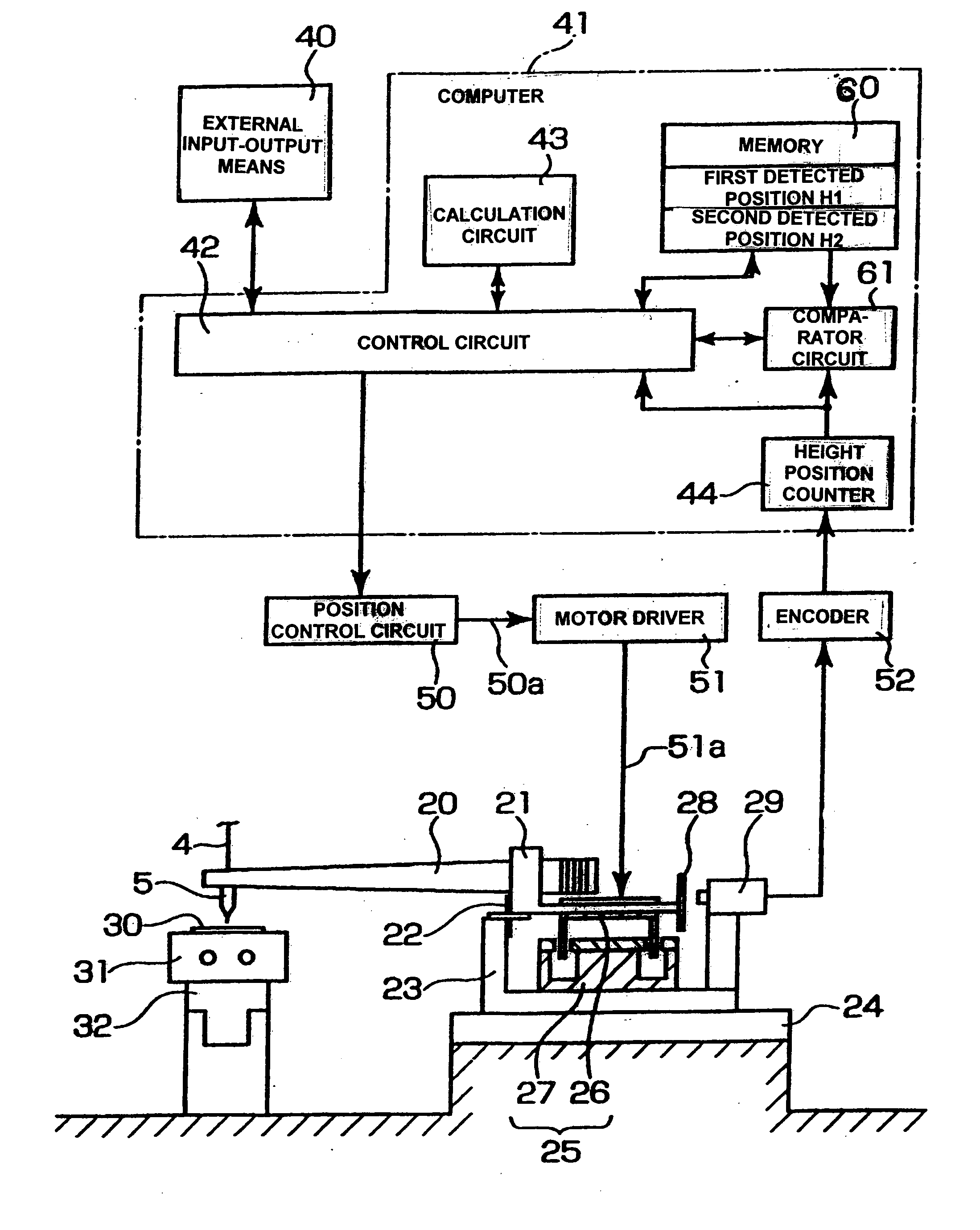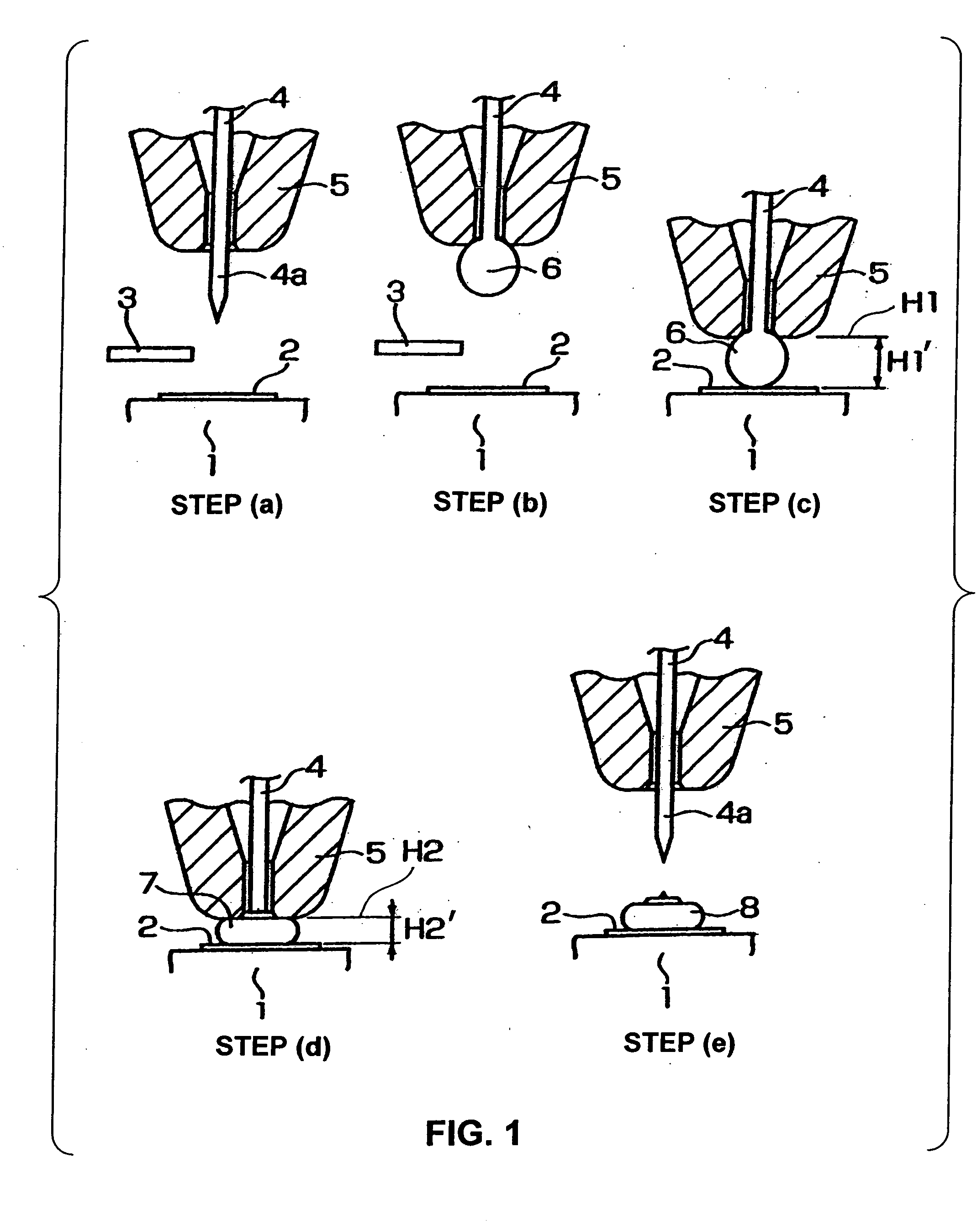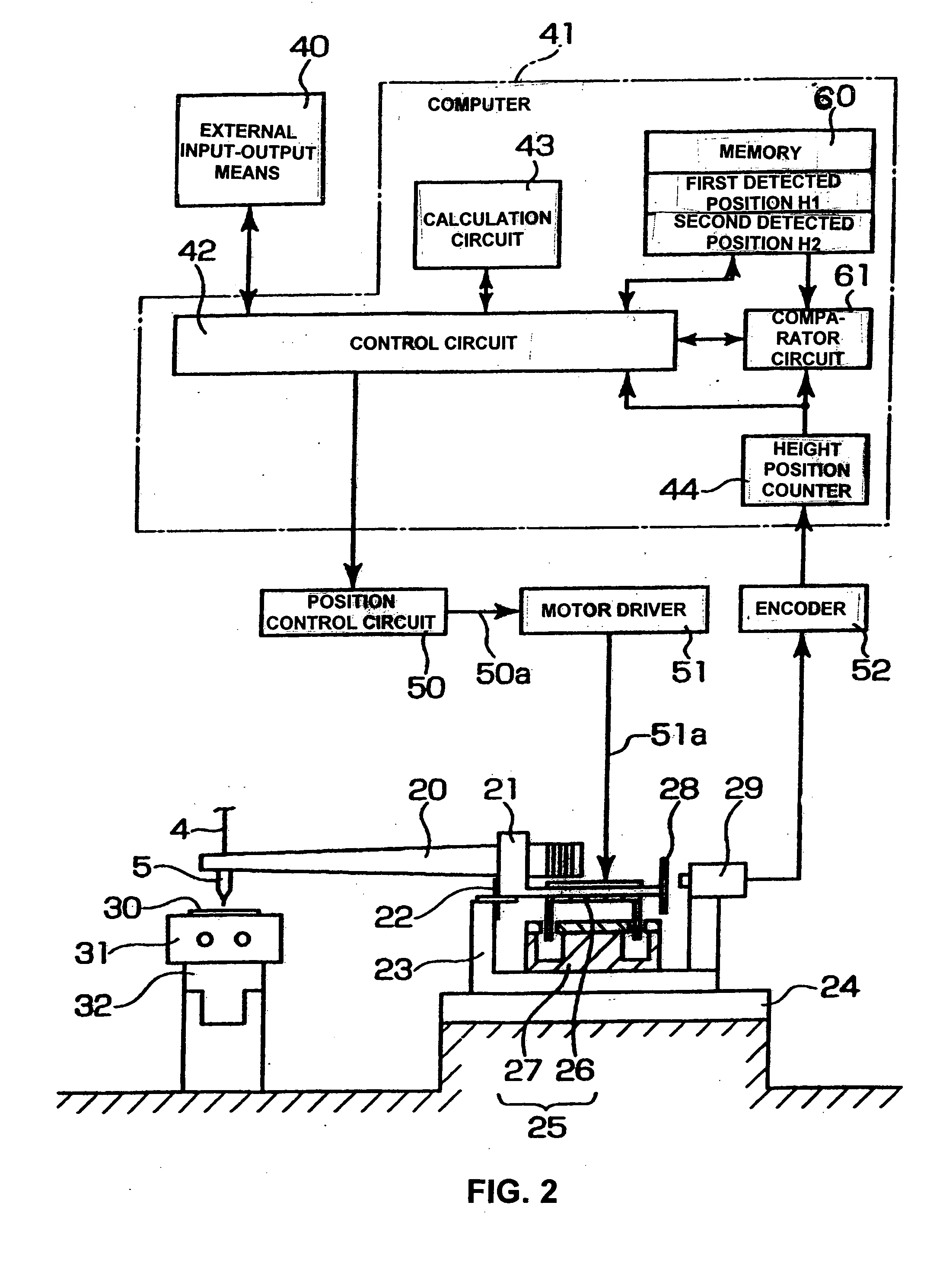Bump bonding apparatus and bump bonding method
- Summary
- Abstract
- Description
- Claims
- Application Information
AI Technical Summary
Benefits of technology
Problems solved by technology
Method used
Image
Examples
Embodiment Construction
[0046] One embodiment of the present invention will be described with reference to FIGS. 1 through 4. In FIGS. 1 through 4, the same reference numerals are assigned to the members that are the same as those in FIGS. 5 through 7 or that correspond to the members in FIGS. 5 through 7, and a detailed description of such members is omitted.
[0047]FIG. 1 shows the steps (a) through (e) taken in the present invention and corresponds to FIG. 5.
[0048] First, the following work is performed prior to the bump formation. As shown in steps (a) and (b), a ball 6 is formed by performing an electric discharge on the tail 4a of a wire 4 from the discharge electrode 3.
[0049] Next, in step (c), a first detected position H1, which is apart from the surface of the electrode pad with a distance of H1′ and is a contacting level of the ball at the lower end of the capillary 5 at the time when the capillary 5 is lowered and the ball 6 comes into contact with the electrode pad 2, is stored in the memory 6...
PUM
 Login to View More
Login to View More Abstract
Description
Claims
Application Information
 Login to View More
Login to View More - R&D
- Intellectual Property
- Life Sciences
- Materials
- Tech Scout
- Unparalleled Data Quality
- Higher Quality Content
- 60% Fewer Hallucinations
Browse by: Latest US Patents, China's latest patents, Technical Efficacy Thesaurus, Application Domain, Technology Topic, Popular Technical Reports.
© 2025 PatSnap. All rights reserved.Legal|Privacy policy|Modern Slavery Act Transparency Statement|Sitemap|About US| Contact US: help@patsnap.com



